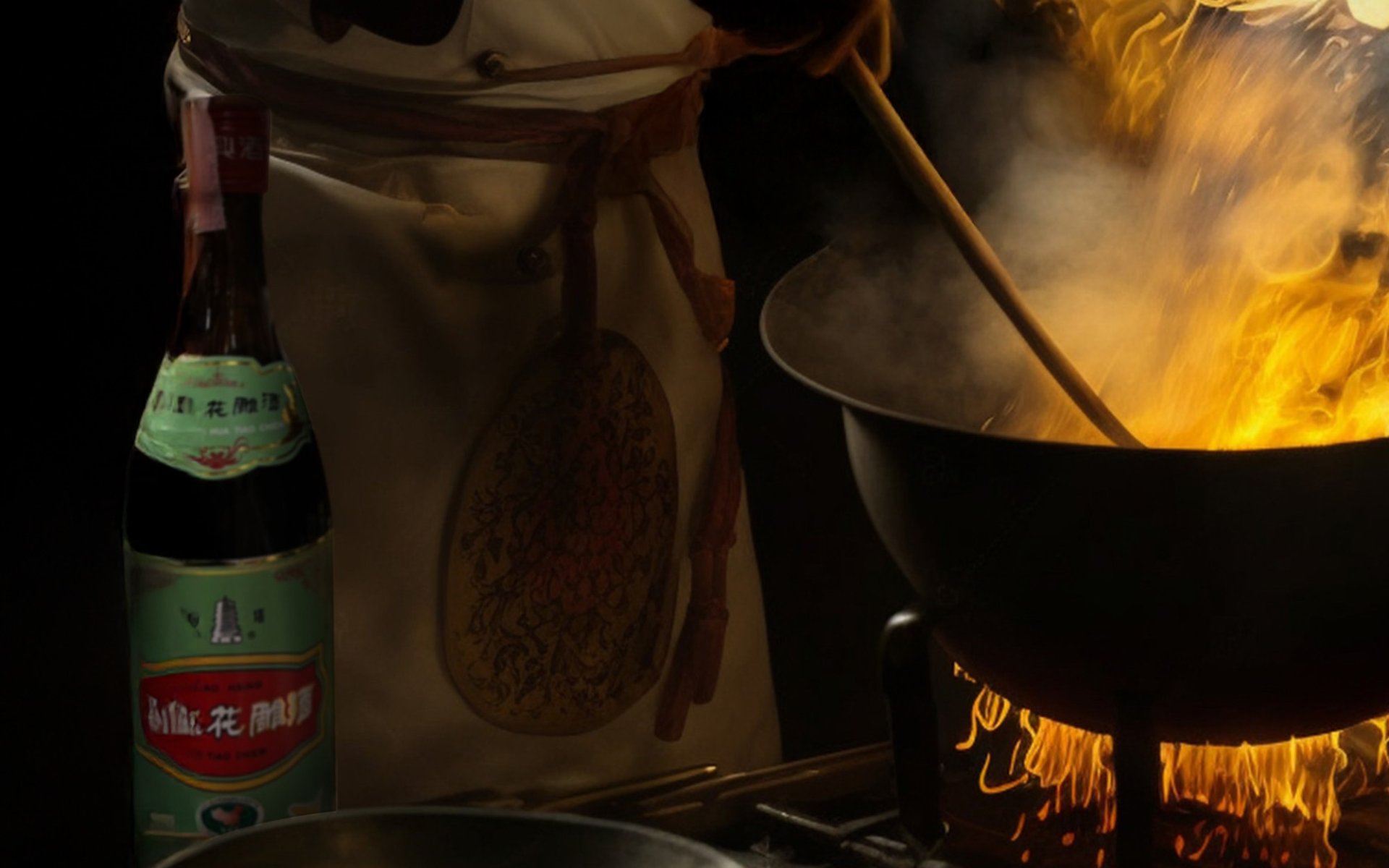Chinese Cooking Wine

The charm of food is multifaceted, encompassing taste, presentation, ingredient selection, and undeniably, its aroma, which is crucial in making food appetizing. Especially the fragrant scent of alcohol that adds charm and complexity to our dishes. This is why the technique of incorporating liquor or alcohol into cooking has been a long-standing culinary tradition worldwide. Today, we will delve into the story of using Chinese cooking wine in cuisine.
Chinese Cooking Wine in Global Kitchens: A Distinctly Asian Flair
The technique of using liquor or alcohol in cooking is indeed widely practiced globally. In the West, we are familiar with wine or brandy, but in Asian cuisine, the most prominent use of alcohol in cooking is undoubtedly the culinary culture of China. Anyone who frequently dines on Chinese food might have noticed many dishes that use Chinese cooking wine as a main ingredient, such as Drunken Chicken, stir-fried vegetables, Buddha Jumps Over the Wall, red-braised mushroom soup, and braised dishes (Palo), among many others. However, Chinese cooking wine is typically added as an ingredient during cooking and is not commonly poured over dishes and flambéed later, unlike Western practices.
The History of Chinese Cooking Wine: From Rituals to Popular Beverage
Chinese cooking wine (Rice wine) is mostly made from grains like glutinous rice and wheat. Chinese people have known how to ferment liquor since 5,000 BCE, during the Shang Dynasty. During this period, rice wine was used for various ceremonial purposes, such as offerings to gods and ancestors. It was also used in traditional Chinese medicine as a tonic.
In the Tang Dynasty (618-907 AD), the production and consumption of rice wine became more widespread among the general populace and the nobility, becoming a popular beverage at banquets and festivals. Subsequently, during the Song Dynasty (960-1279 AD), rice wine production continuously evolved, with yeast being introduced into the fermentation process, which improved the taste of rice wine, making it a major industry in southern China.
Later, during the Ming Dynasty (1368-1644 AD) and Qing Dynasty (1644-1912 AD), rice wine production continued its development. It was during this period that rice wine was first used in cooking. Various regions of China began to develop their unique rice wines, using different types of rice and grains, along with distinct fermentation techniques.
Cultural Significance and Health Benefits
In Chinese culture, rice wine is more than just a beverage or a cooking ingredient; it is a symbol of friendship, hospitality, and celebration, often served at important social events such as weddings, business meetings, and family gatherings.
Furthermore, Chinese people believe that cooking rice wine offers many health benefits, including improving blood circulation, aiding digestion, and reducing stress. In traditional Chinese medicine, rice wine is commonly used as a tonic for the liver and kidneys.
The Charm of Chinese Cooking Wine in Food: Deep Flavors Without the Alcohol
In the culinary world, rice wine or Chinese cooking wine enhances the aroma and deepens the flavors of our dishes. These alcoholic beverages, having undergone long fermentation and aging, develop complex tastes and a unique fragrance. When cooked with heat, the alcohol evaporates, leaving behind only its unique taste and aroma, which significantly enhances the deliciousness of the food.
However, using Chinese cooking wine or other alcoholic beverages in cooking does not result in intoxication, unlike consuming alcoholic beverages directly. This is because alcohol evaporates almost entirely when exposed to heat. Therefore, even those who do not like to drink alcohol can enjoy dishes that contain alcohol as an ingredient.


